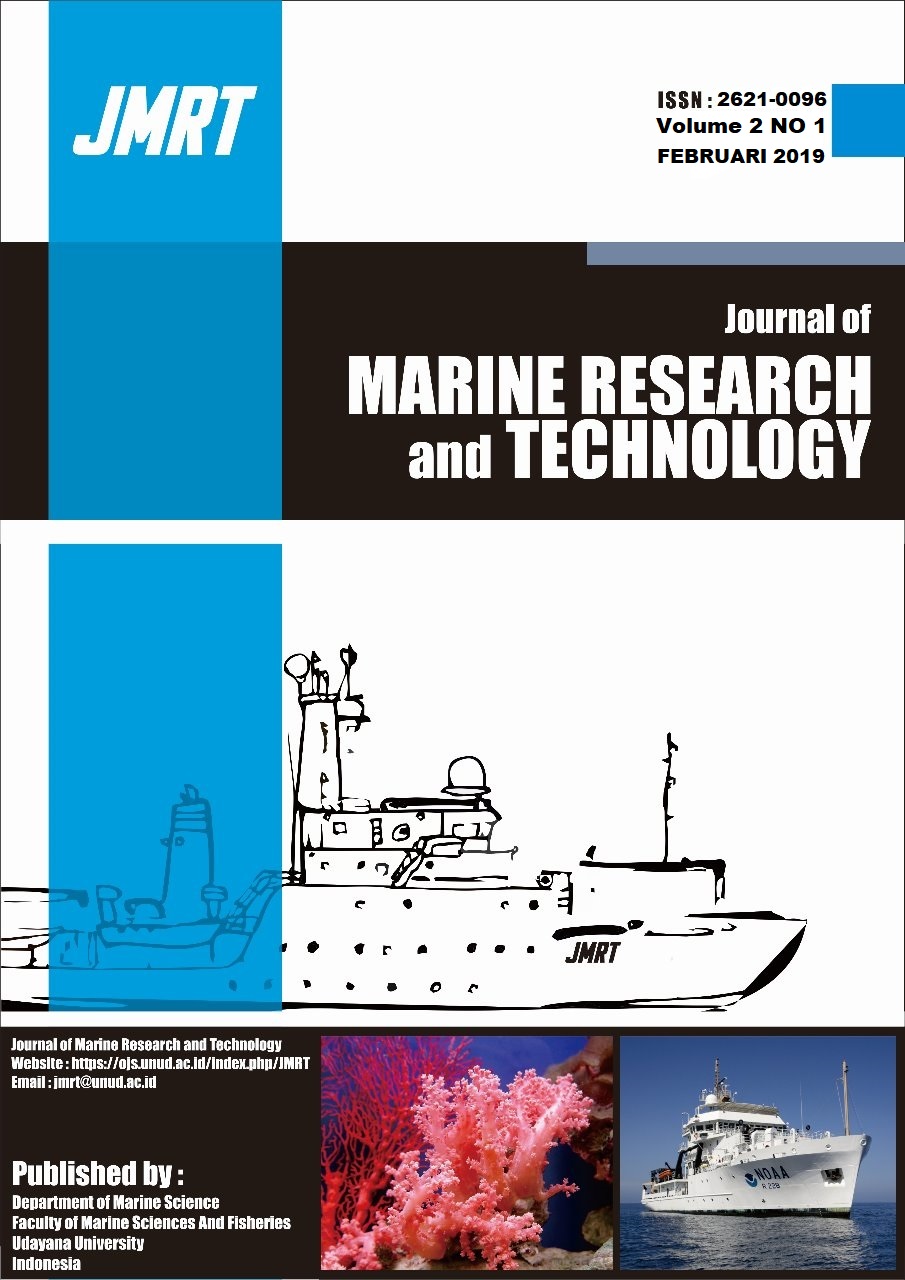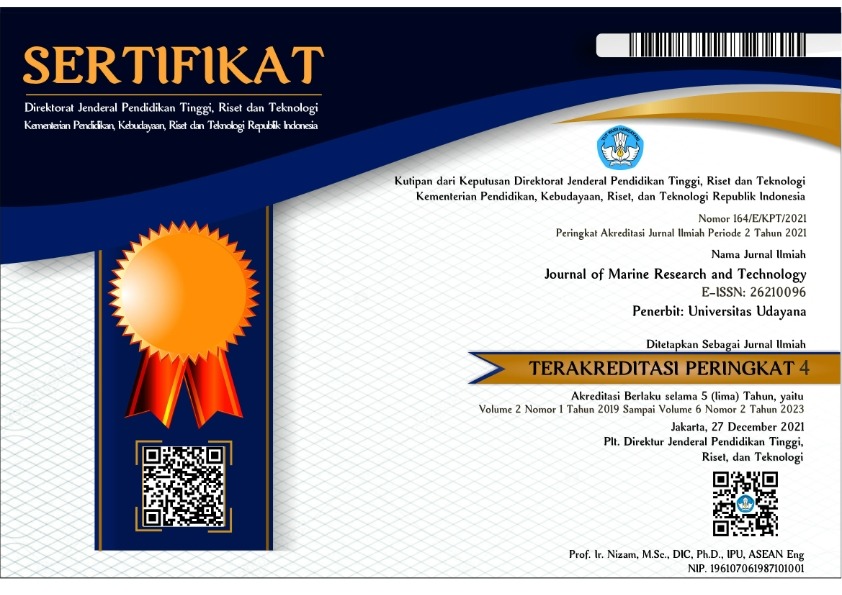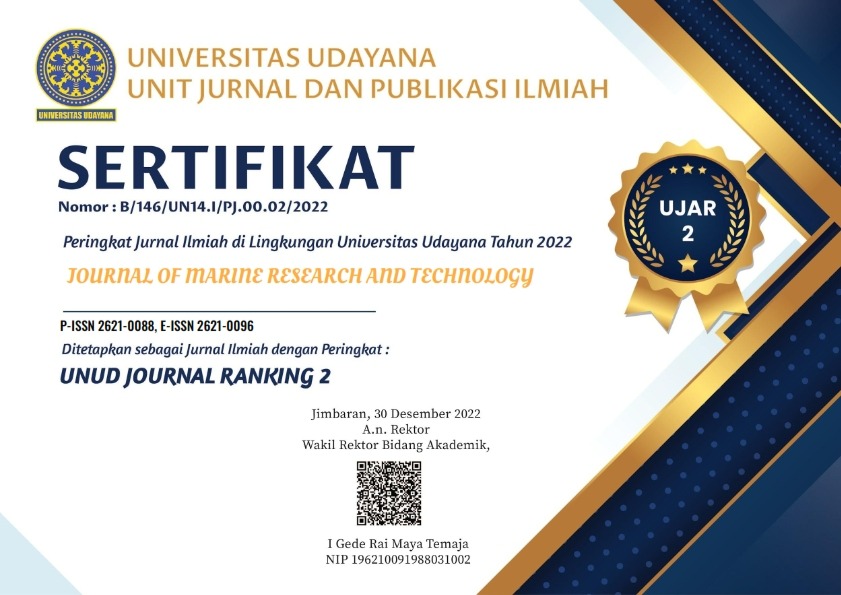PERBANDINGAN LAJU PERTUMBUHAN RUMPUT LAUT (EUCHEUMA COTTONII) DENGAN MENGGUNAKAN SISTEM BUDIDAYA CO-CULTURE DAN MONOCULTURE DI PERAIRAN PANTAI GEGER, NUSA DUA, BALI
Abstract
Seaweed is a low level plant that can not be distinguished between the roots, stems and leaves so-called thallus. In seaweed cultivation process, seaweed farmers use monoculture system. But with the growing knowledge there is a more profitable system that is with the co-culture system. The co-culture system is a cultivation system that combines species from different trophic levels in the same system and considers environmental sustainability. The existence of co-culture system is believed to help fishermen in increasing income and overcome environmental problems due to the results of cultivation activities that are not utilized. This research was conducted for 42 days on May 2, 2018 - June 13, 2018 in the waters of Coast Geger, Nusa Dua, Bali https://www.surreyhillschallenge.com/. The method used is the RAL method (Completely Randomized Design) using three treatments and three replications. The monoculture cultivation system as a control and co-culture cultivation system with different density of abalone is 20 and 40 abalone consists of 10 seeds of seaweed with the same initial weight of 100 grams. The results showed that the highest seaweed-specific growth rate between the monoculture system and the co-culture system in cycles 1 and 2 was found in the co-culture system, whereas in cycle 3 the co-culture system experienced lower growth rate due to competition between thallus, the epiphytes attached to the cultivation net of co-culture, large enough current, and the loss of abalone that allegedly taken by the community around the coast. In this study there is also a tip of the thallus that is susceptible to ice-ice disease due to the presence of fish predators.
Downloads
Copyright Notice
The copyright to this article is transferred to Journal of Marine Research and Technology (JMRT). The copyright transfer covers the exclusive right and license to reproduce, publish, distribute and archive the article in all forms and media of expression now known or developed in the future, including reprints, translations, photographic reproductions, microform, electronic form (offline, online) or any other reproductions of similar nature.






